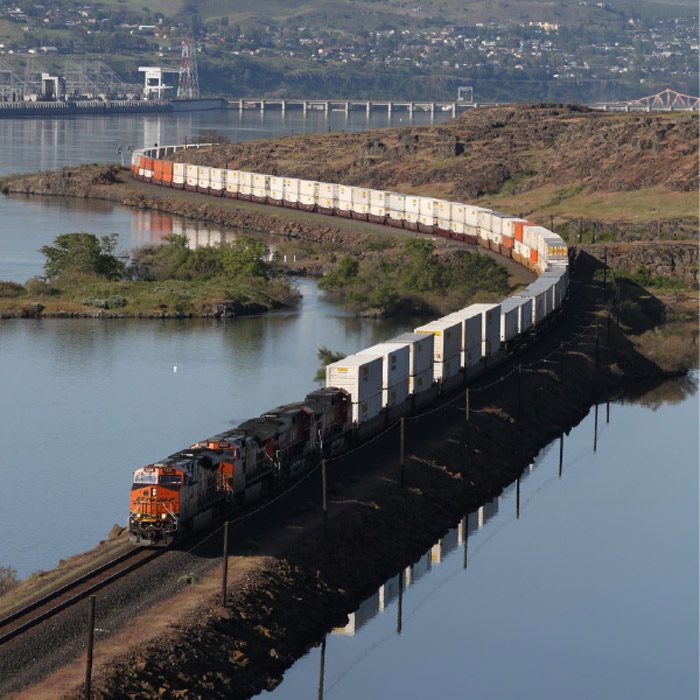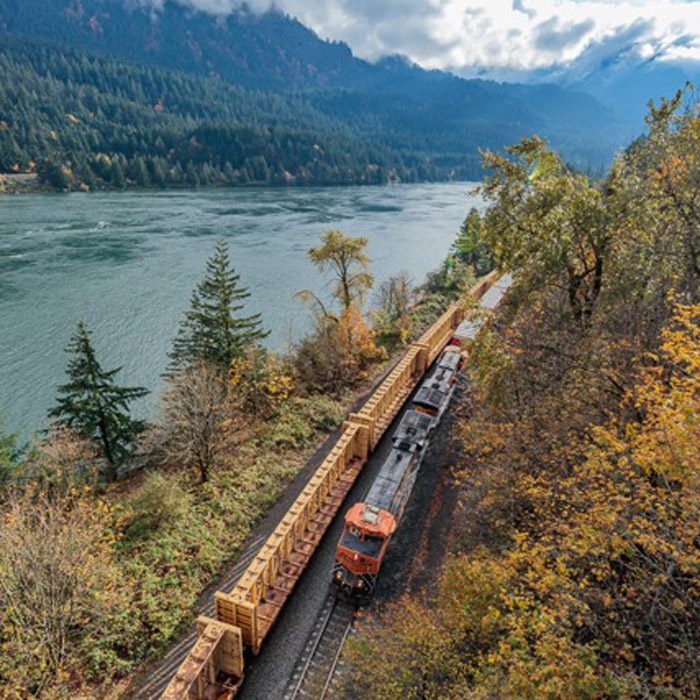It was disappointing to read the final Environmental Impact Statement (FEIS) that the Washington Department of Ecology released on the Millennium Bulk Terminals project, and the subsequent public tweets from the agency concerning this document. The FEIS makes several faulty assumptions about BNSF Railway’s operations, resulting in conclusions that overstate, in a counterproductive manner, the potential health risks associated with railroad operations in Washington, and the United States. Neither Ecology nor its Director attempted to reach out to BNSF to discuss these operational assumptions before publishing the FEIS.
The FEIS fails to disclose key data and analysis upon which its conclusions are based. From our perspective, there is a “black box” when data is not published in the body of an FEIS or in its appendices to allow the public to understand the basis of conclusions. This lack of transparency is contrary to the goals and objectives of the State Environmental Policy Act. The FEIS also added a new health risk analysis for rail that was not included in the draft EIS. Our biggest concern with this new analysis is that it suggests diesel particulate emissions from locomotives substantially increase cancer risks in communities that are located by railroad tracks in Washington. No credible scientific studies have ever shown this to be the case.
In fact, a 2010 Washington Department of Transportation (WSDOT) study evaluated adding eight daily round-trip passenger rail trips from the Columbia River to the Canadian border (the same number of daily trips as projected at full operation of Millennium). According to that study, “increased rail service would not result in substantial noise level increases or violations of ambient air quality standards, or other environmental health hazards.” The same study also said, “With the provision of faster and more reliable service, the increase in ridership will result in a decrease in auto fuel used and emissions from passenger vehicles, as diesel-powered passenger trains use less fuel and have lower emissions than the equivalent number of passenger highway vehicles.”
Nowhere in the WSDOT study was a concern about cancer from locomotives identified as a “key finding.” Will these findings be applied to the proposed commuter trains proposed for Sound Transit 3 (ST3)? Their locomotives are the same or are very similar locomotives to the ones that move freight around the state. It is hard to imagine that the different conclusions concerning risks from passenger locomotives could be based on solid scientific analysis and not politics.
The so-called analysis is alarming as the U.S. Environmental Protection Agency (EPA) does not, and has never, published a risk assessment method for exposure to diesel exhaust. In addition, for many years, the EPA has regulated both the content of diesel fuel and emissions of particulate matter (PM) and nitrogen oxides (NOx) from locomotives and trucks. For locomotives, EPA regulations are based on progressively more stringent “tiers.” The most recent locomotive standards are “Tier 4” standards and apply to all locomotives built or remanufactured since 2015. EPA standards for locomotives and trucks are phased in over time and balance the costs and benefits of further improvements. This means that the percentage of the overall locomotive and truck fleets that meet the newest, most stringent standards is constantly rising as older locomotives and trucks are replaced by newer units (the same approach that has worked well for automobiles over the past 40 years). In fact, BNSF’s locomotives are 30- to 40-year assets that are remanufactured to the current standard every 6 to 8 years to enhance their operational efficiency and proactively reduce emissions.
The FEIS did not take into account in its air emissions analysis that BNSF’s locomotive fleet is the newest and cleanest in North America. The FEIS used a national fleet average to estimate emissions rather than using BNSF specific data. Likewise, it assumed continuous locomotive operation despite the fact that 98 percent of BNSF’s fleet have idle-control devices. Idle-control mechanisms installed on locomotives reduce air emissions and fuel consumption by automatically shutting down locomotives that aren’t being used. All new locomotives we purchase are equipped with this technology, and we will continue to retrofit for the very few remaining older locomotives.
It is also important to note that a March 2015 study by an economist at the Congressional Budget Office (CBO) compiled data from a variety of sources to estimate the unpriced external costs – that is, costs to society not covered by taxes – associated with freight transport by rail and truck. The study estimated that the external costs associated with emissions of particulate matter, nitrogen oxides, and carbon dioxide are three to five times higher for trucks than for railroads. In other words, moving freight by rail rather than by highway significantly reduces these emissions. It also reduces fuel consumption.
Freight rail is by far the most environmentally sensitive ways to move goods on land. For example, an intermodal train effectively takes the equivalent of 280 trucks off the highway, which saves four times the fuel of trucking and reduces emissions, highway traffic congestion and maintenance for public highways.
It is important to provide analyses and make assumptions with the most current and accurate information, and to communicate this information in a responsible, unbiased manner to the public. The simple truth is that BNSF’s investment in technology, new locomotives and efficient operations are helping to reduce emissions. We are part of the solution for a sustainable supply chain – and helping to grow Washington’s trade-dependent economy.




